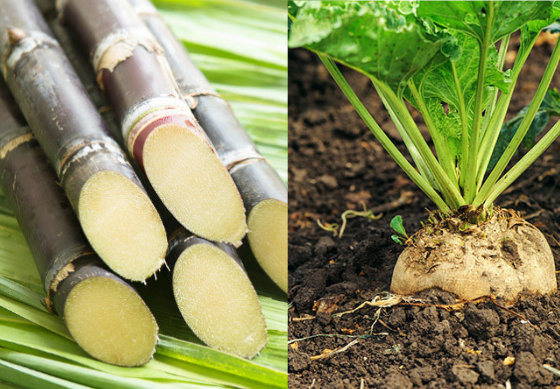Discover the Uses and Perks of Beet Sugar Vs Cane Sugar in Your Daily Diet Regimen
Exploring the distinct high qualities of beet and cane sugar discloses more than just their sweetening capacities; it highlights their unique influence on health and wellness and cooking arts. Beet sugar, recognized for its refined taste, is often favored in delicate desserts, whereas cane sugar, with its hint of molasses, adds richness to robust meals. Each kind holds its own dietary account and glycemic implications, inviting a deeper understanding of their roles in a well balanced diet and lasting intake techniques.
Beginning and Manufacturing Processes of Beet and Cane Sugar

The distinctive environments and dirt kinds needed for growing sugar beets and sugarcane add to differences in their farming methods and geographical distribution, affecting the business economics and sustainability of their manufacturing. beet sugar vs cane sugar.
Nutritional Contrast In Between Beet Sugar and Cane Sugar
Despite originating from various plants, beet sugar and cane sugar are nutritionally really similar, both mostly containing sucrose. Each supplies about 4 calories per gram, translating to approximately 16 calories per teaspoon. Structurally, both sugars are composed of about 99.95% sucrose, with very little quantities of various other substances like wetness and trace element, which do not significantly modify their nutritional accounts.

Ultimately, when selecting between beet sugar and cane sugar based on nutritional material alone, both deal identical benefits and downsides as they are essentially types of the same particle-- sucrose, providing quick power without various other nutrients.
Effect on Wellness: Glycemic Index and Caloric Material
Exploring further right into the impacts of beet sugar and cane sugar on health and wellness, it is essential to consider their glycemic index and caloric content. The glycemic index (GI) of both beet and cane sugar is around 65, classifying them as high-GI foods, which can cause quick spikes in blood sugar levels.
Each kind of sugar has about 4 calories per gram, making their caloric web content matching. For those keeping track of calorie intake, specifically when taking care of weight or metabolic health and wellness conditions, recognizing this equivalence is important (beet sugar vs cane sugar). Extreme consumption of any high-calorie, high-GI food can add to health and wellness concerns such as weight problems, heart illness, and insulin resistance.
Environmental and Economic Factors To Consider of Sugar Production
Beyond health effects, the production of beet and cane sugar additionally elevates significant ecological and financial concerns. Sugar beet growing visit homepage often tends to need cooler environments and has a lower geographical footprint compared to sugar cane, which Web Site flourishes in tropical regions.
Furthermore, making use of chemicals and plant foods in both beet and cane sugar growing can cause soil destruction and air pollution, more influencing biodiversity and neighborhood water bodies (beet sugar vs cane sugar). The selection in between growing sugar beet or cane typically depends upon regional environmental conditions and financial variables, making the sustainability of sugar manufacturing an intricate issue
Culinary Applications and Flavor Distinctions
While the ecological and economic aspects of sugar manufacturing are without a doubt considerable, the choice between beet and cane sugar also influences cooking applications and taste accounts. Beet sugar, acquired from the sugar beet plant, is known for its extremely neutral taste.
Walking cane sugar, extracted from sugarcane, commonly preserves molasses traces, which impart a distinct splendor and deepness. The minor variation in moisture material between beet and cane sugar can impact the structure and uniformity of meals, making cane sugar a recommended selection for details recipes that benefit from its special read the full info here buildings.

Conclusion
Finally, both beet and cane sugar have distinctive beginnings and manufacturing procedures, supplying comparable nutritional profiles with mild distinctions in sodium content and taste. While their effect on wellness, specifically pertaining to glycemic index and calories, is equivalent, the option between them usually comes down to environmental, financial aspects, and details cooking needs. Understanding these facets can direct consumers in making educated decisions that align with their health and wellness objectives and flavor choices.